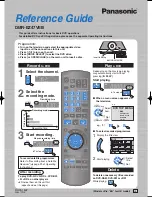
15
43
44
45
46
47
48
49
50
51
52
53
54
55
56
57
58
59
60
61
62
63
64
XVDD
XOUT
XIN
XVSS
SBSY
EFLG
PW
SFSY
SBCK
FSX
WRQ
RWC
SQOUT
COIN
___________
CQCK
________
RES
TST11
16M
4.2M
TEST5
______
CS
TEST1
—
O
I
—
O
O
O
O
I
O
O
I
O
I
I
I
O
O
O
I
I
I
Crystal oscillator power supply pin.
Pin to which external 16.9344 MHz crystal oscillator is connected.
Crystal oscillator GND pin. Be sure to connect to 0V.
Subcode block sync signal output pin.
C1, C2, single and dual correction monitoring pin.
Subcode P, Q, R, S, T, U and W output pin.
Subcode frame sync signal output pin. Falls down when subcode enters standby.
Subcode read clock input pin. Schmidt input. (Be sure to connected to 0V when not
in use.)
Pin outputting the 7.35 kHz sync signal which is generated by dividing frequency of
crystal oscillator.
Subcode Q output standby output pin.
Read/write control input pin. Schmidt input.
Subcode Q output pin.
Command input pin from microprocessor.
Command input read clock or subcode read input clock from SQOUT pin
LC78622 reset input pin. Set this pin to L once when the main power is turned on.
Test signal output pin. Use this pin as open (normally L output).
16.9344 MHz output pin.
4.2336 MHz output pin.
Test signal input pin with built-in pull-down resistor. Be sure to connect to 0V.
Chip select signal input pin with built-in pull-down resistor. Be sure to connect to 0V
while it is not controlling.
Test signal input pin without built-in pull-down resistor. Be sure to connect to 0V.
Note:
The same potential must be applied to the respective power supply terminals. (VDD, VVDD, LVDD, RVDD, XVDD)
Pin No.
Pin Name
I/O
Description




































